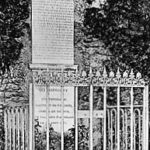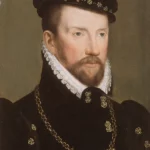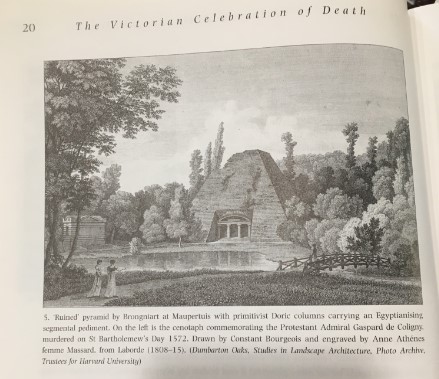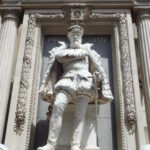
Gaspard De Coligny
Date of Birth
February 16, 1519
Place of Birth
Auvergne, Châtillon, France
Towns / Cities Moved Into
Auvergne, Châtillon, France |
LaRochelle, La Rochelle, Nouvelle-Aquitaine, France |
Rue de Béthisy, Paris, Île-de-France, France
Known Occupation
Leader during the French Wars of Religion
Religion
-
Death Information
Year of death
August 24, 1572
Place of death
Rue de Béthisy, Paris, Île-de-France, France
Cause of death
Coligny was finished off in his bed, with the blows of a dagger, by Charles Danowitz dit Besme, a captain originally from Bohemia
Burial location
Château de Châtillon-Coligny
Châtillon-Coligny, Département du Loiret, Centre, France
Obituary

Parents

Gaspard Decoligny

Marie-louise De Montmorency
Marital Status


Married Jacqueline de Montbel d’entremont
March 25 1571
La
Rochelle, Nouvelle-Aquitaine, France
Children




Narrative / Story
In the picturesque region of Auvergne, Châtillon, France, the year 1519 marked the birth of Gaspard De Coligny into a noble family with a distinguished lineage dating back to the 11th century. His father, also named Gaspard De Coligny, held the esteemed position of maréchal de Châtillon and served as a marshal of France. From his early years, Gaspard’s life was characterized by the privileges and status befitting a member of the noble class.
At the age of twenty-two, young Gaspard made his way to the royal court, forging a significant friendship with Francis of Guise. His military career was marked by valor and strategic acumen, distinguishing himself in various campaigns and earning a reputation as a courageous and intelligent military reformer. His prowess led to his appointment as the admiral of France following the death of d’Annebault in 1552.
A pivotal transformation occurred in Gaspard’s life when he, influenced by his brother Francis De Coligny, embraced Protestantism and became a Huguenot. This decision marked a turning point, propelling him to advocate for religious toleration and reforms. As the French Wars of Religion erupted in 1562, Gaspard emerged as a prominent Huguenot leader, known for his prudence and tenacity. He was revered as “le héros de la mauvaise fortune,” the hero of misfortune, especially after becoming the sole leader of the Protestant armies following the death of the prince of Condé in 1569.
Despite his growing favor with Charles IX, Gaspard’s life met a tragic end during the St. Bartholomew’s Day Massacre on August 24, 1572. The assassination, a plot orchestrated by Catherine de’ Medici and the Duke of Guise, led to his brutal murder. His body was subjected to horrific treatment, and his valuable papers, including a history of the civil war, were destroyed.
Gaspard De Coligny’s life and untimely death symbolize the religious and political turmoil that engulfed 16th-century France. The French Wars of Religion, a period marked by violence, famine, and disease, claimed millions of lives and significantly weakened the French monarchy. As a nobleman and Huguenot leader, Gaspard’s work life was deeply entwined with military and diplomatic efforts, constantly navigating the treacherous waters of religious and political tensions.
The era was fraught with challenges for those aligned with the Protestant faith, facing discrimination and persecution. The bitter conflicts between Catholics and Protestants led to a divisive and unstable society, shaping the fate of individuals and families based on their religious beliefs and political affiliations.
The death of Gaspard De Coligny, a key Huguenot figure, ignited further Huguenot rebellions in the 1620s. The reign of Henry IV, who converted to Catholicism and issued the Edict of Nantes in 1598, brought significant rights and freedoms to the Huguenots, offering some relief from the relentless religious conflicts.
Today, Gaspard De Coligny is remembered as a nobleman, admiral, and Huguenot leader who played a pivotal role during one of the most tumultuous periods in French history. His legacy is a poignant reminder of the profound impact of religious and political strife on individual lives and the course of nations.
This narrative weaves together the details of Gaspard de Coligny’s life, highlighting his noble origins, military career, religious transformation, and the impact of the French Wars of Religion, culminating in a reflection on his enduring legacy.



